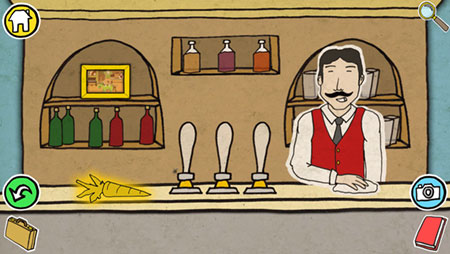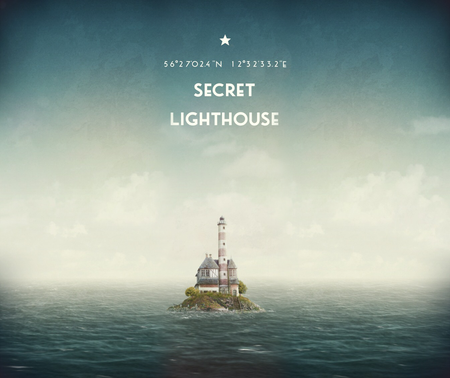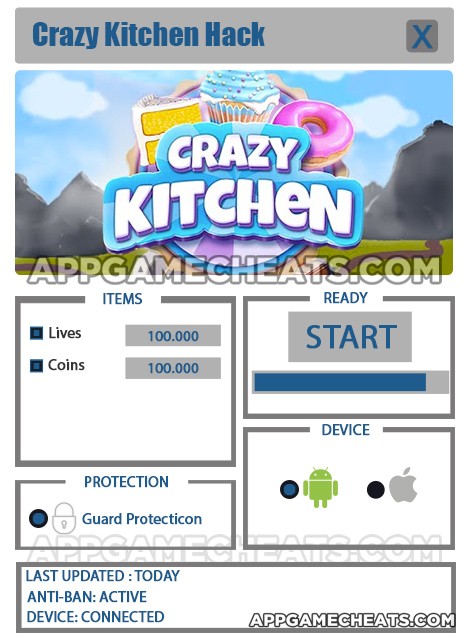

Implosion: Never Lose Hope is a hack and slash style game that eqs recently released on Android by Rayark International Limited earlier this year. Their teaser trailer qqsnpretty impressive, so it was one that I had my eye in playing/reviewing for a while now. The game is a mixed bag for sure, so let's jump into the high and low points for this game. Beginning with the low...
The story for the game would seem interesting, at least on paper. Set in the future, humanity began to aspire to colonize other planets that could sustain life due to dwindling resources. As humanity was about to push out into interstellar space travel, a hive-minded alien life form known as the XADA picked up on the technology (think hearing sonar or seeing flashing lights during the night), and were drawn to Earth with hostile intent. Such was the impetus for a military program that created what are known as warmechs. After a relatively short war with the aliens that didn't go well for humanity, the survivors took off as soon as it was technologically capable, abandoning the earth to the XADA. About a decade and a half later, there is reason to believe the XADA were beginning to expand beyond earth, and the character I assumed, named Jake Carloway, enters the story with his late model warmech. Jake is tasked with returning to reconnoiter the XADA, and stop them if necessary.
Most of this story is explained as the game begins, and before you get to play the the first mission. They use a style that looks like it had a slight influence from classic 80s cartoons that originated in Japan, but not heavily so. You never see the characters mouths move, in game or cut scene between levels, but the game has solid voice acting for the characters, so the style wasn't any kind of impediment. Sadly though, the story didn't suck me in. Almost all of it's meaningful parts were dispensed with in the prologue, and I found myself frequently checking out on it, and really losing track of what was supposed to be going on with the narrative. I can't really finger why exactly, but to say that it did came across as repetitive. At the outset of each mission, and after the cut scene, there is some conversation between Jake and the others in his crew. This "radio chatter" typically sets up a given mission's objectives, and would occasionally advance the narrative somewhat (during the mission), but it was mostly window dressing for my character to just go from point A to point B.
The gameplay itself wasn't bad. When I initially loaded the game and began playing through the first couple of missions, I was impressed. See, I wasn't really controlling Jake in the game, per se. Jake was still on the starship, and had jacked himself into a network that transferred his consciousness into his warmech (a la the Matrix). So, I got to control the warmech on each level, and had to kill every alien (or hybrid, etc) life form that attempted to stop me. Apparently, most of the time I was "investigating" each level (with few exceptions), or heading toward something to investigate, with all that was required of me was to get to the finish. Only two or three times was I tasked with "holding the line", where I needed to prevent XADA from crossing a red line, up to certain threshold of around six enemies passing by my warmech (think a one person tower defense) until the waves of enemies finished. There wasn't more than two or three instances of that, with the rest being for me to go to the end of the level, and locating a key along the way was the only other variance in how a mission played out.
The reasons for completing a level changed, but it didn't play out differently in execution. The game is broken down into four chapters, of each was in a different locale/environment with eight levels per, and ten on the last chapter, so 30 or so of the missions felt like they played out exactly the same as the one that came before it. The levels also ran very short for the first chapter or two, with most of them ending in under five minutes. They lengthened a bit as the game went on, but I don't recall any of them exceeding fifteen minutes; even the ones that were in the ten to twelve minute range typically took that long when I was struggling with a boss or another difficult portion.
The mechanics for the action portions of this game were simple. First, I used my left thumb to swipe in any direction, to move my mech. Save for the pause button at the top-center, all the visible, on-screen buttons were in the lower, right hand corner. There's a relatively large circle that gets pressed for attacking, and four smaller buttons surround the larger one, closer to the middle of the screen. The solitary large button is specifically used to swing the warmech's sword, and the bottom most of the four smaller ones is a dive/roll.
When combing a movement swipe with the attack button, I could fire a secondary weapon that was a rifle, but that could be upgraded to something else (shotgun, flamethrower, etc) within the level. The other three, small buttons are "up for grabs", and I'll explain how that works shortly. Straight up button mashing actually works in this game, but pacing and timing your attacks has benefits as well. When attacking, I could just tap away on the large button, and the warmech would perform a nifty attacks sequence with the sword, that ends with it spinning like a top while its sword is out, making it a veritable blender for any XADA unfortunate enough to be within the mech's reach. Beyond the simple mashing are alternative attacks, still using that one button.
Any time that I paused in my mashing (before the mech completed the sequence), a purple colored sphere would briefly arise from my mech. Attacking again before the bubble expired would then cause the mech to perform a much stronger attack. And the stronger attacks would differ, depending on when in the sequence I chose to pause, and switch from swift and light attacks to something slower and heavier. This made for a simple way to control a variety of attacks with the sword. The heavier attacks could also be " daisy chained" by pacing them properly, to do massive damage. But there's a counterpoint to simply doing massive attacks all the time.
There are two bars, and a hex that need minding in the upper left hand corner. Two of them are health related. The hex represents how much shielding that my mech had left at a given point, and would recharge if I wasn't attacked several seconds. The first of then two remaining bars was for my mech's health. This bar was only tapped into when I took damage after my shields gave out, and the health wouldn't recharge on its own. Health power-ups were needed to be found in a level to boost it, otherwise I had to finish or restart the level. This leaves us with the second bar, the rage meter.
Every time I landed a successful melee attack with the sword, the amount of energy on the rage meter would increase. As far as I could tell, it appeared to increase the same amount for the rapid fire blows from the sword as it would from the heavier blows. Thus, I used the simple button mashing when I needed to charge my rage meter, and used heavier attacks when I wanted to do more damage. It was a nice balance between the two. The rage meter, when full enough, would be used to power secondary attacks or abilities of various sources. These are triggered in the remaining " up for grabs" buttons that in mentioned earlier, as they are able to be configured by the user.
Within Implosion, users have some RPG-esque options for what powers or boosts you would like your warmech to have. In between missions, there are a few different screens, that include game options, badge rewards, and the "ark" screen where players could tweak the strengths and weaknesses of their mech. The set up is as follows: similar to how the buttons are laid out for combat, there is a large circle surrounded by several smaller ones. The large circle starts with a unit already in place, that determines one of the secondary attacks. This can be swapped out for other units that will add or change the secondary attacks that are powered by the rage meter. The smaller, surrounding circles had units that could be likewise swapped out, to upgrade some features (such as overall health, amount if damage done, shields, and so on) at the expense of others. And this is where things get fuzzy.
The definitions of the various categories that can be pumped are only vaguely described, so it wasn't all that clear to me what was being improved or held back. To compound the confusion, of the six smaller slots, some of the units could fit into more than one slot, while others were only eligible to slot into a single one. The how and why of it never seemed to be made clear with the units in question, giving me the feeling of blind guesswork at times when contemplating the replacing of a unit. To compound my discontent with this facet of the game, too many of the upgrades were in small increments, such as boosting shield strength or the speed at which the rage meter charges by say, 4%. Yet, I rarely noticed a difference in performance, so they could've claimed a boost of ten or twenty percent for all the good it would've done, if there's no real appreciable difference "in the field". I ended up just focusing on two or three categories that I thought might be helpful, and otherwise didn't focus on this very much at all.
In the game, players can acquire cash and health that are found in two ways. Frequently, there are bins or canisters found laying about the various levels. Destroying these always gave health boosts or cash. When enemies were killed, they sometimes would drop cash or upgrade units. The cash could be spent on upgrades of all sorts, and I could also sell unwanted upgrades back for more cash. Implosion utilizes a second system for players to score gear that was predicated on earning badges, which was another good idea that was poorly executed. I could earn badges at the end of levels for performing well in a variety of areas, finishing the level quickly enough, using only my sword, not dying and using one of the five revives/continues you're allotted form each level before restarting the level, completing the level on the difficult mode, etc). As you reached preset thresholds, I could be rewarded with anything from a bunch of cash to a new mech suit.
Here's where the idea failed: the game doesn't tell you which metrics it'll be watching for on a level, until you've completed it. So there were levels where I didn't die, but missed a badge for using a gun. Other times, I would die a few times, but still managed to luck out and complete the level quickly enough to earn that level's badge. I think the experience would've been much more enjoyable had I known what curve ball I was supposed to watch for on each level, instead of making it a crap shoot. I just don't get the decision, as it made the badges a capricious acquisition, vs something that I could earn with some extra effort and skill.
The layouts of the levels were fairly linear. As I mentioned before, I was heading from start to finish almost every time. That being said, the appearances of the levels was pretty nice. Each chapter had a different flavor/environment to it, so some levels were frozen tundras, while others had the appearance of being dangerously close to a volcano, or others that were inside a base of sorts. Also the appearance could be all screwed up due to network problems between my character and his mech, with this last one being a good idea that seemed to have been implemented well.
While traversing each level, there was a circle that appears under my character that indicated the direction I was facing using a small pointer, as well as a larger pointer to show which way I was to progress. There were times though where it would pass beneath the floor texture. While this didn't prove prohibitive, it struck me as odd that the game would render the different layers in that order.
The graphics for the game were pretty solid, as they appeared on my Nvidia Shield. The game ran smoothly and everything looked good. The soundtrack was decent as well, though for the boss fights a hard rock track was used that didn't seem to fit very well. That could just be my taste though. The game only uses on-screen touch controls. I attempted to use the controller that works with the shield tablet, only to see the virtual buttons on the screen disappeared, negating the controller's ability for button mapping. I emailed the developers about the issue and was told "Thanks for the email. Implosion do not officially support gamepads currently. Some controllers may work in game play part, but we do not promise the compatibility. The function will be redesigned in future update."
The game has only a single save file (with the option to reset your game data, should you want to start over). They also included the option to save in the cloud, which was really nice. I received my replacement Shield from Nvidia's recall while playing, and the cloud save worked great in carrying over the cash, badges, progress, settings, and the like. There's also two difficulty levels, which can be toggled as often as the users likes in between missions.
Overall, this game is tough to recommend in the end. I think it holds promise, as I was impressed with the idea of controlling a warmech that walks around with a sword, and slays every alien in sight. Very cool idea. But with all the little things that need addressing in some way, it's tough for me to tell you to drop a ten spot on this. Keep an eye on the game though. If they patch up some of the flaws, such as the vague descriptions, add controller support, and improve the lack of clarity with which upgrade units can be applied and where, it'll improve the overall experience. At that point, it'll be worth a gander if narratives aren't what drive you.
Implosion (Playboard) | Implosion (Play Store)




 Dawn of Steel Cheats: 8 Tips, Tricks and Strategies
Dawn of Steel Cheats: 8 Tips, Tricks and Strategies How to find every secret in The Sailors Dream on iPhone and iPad - map and walkthrough
How to find every secret in The Sailors Dream on iPhone and iPad - map and walkthrough Crazy Kitchen Cheats & Hack for Lives & Coins - AppGameCheats.com
Crazy Kitchen Cheats & Hack for Lives & Coins - AppGameCheats.com Icon Pop Quiz Ghost Films Answers Level 1-16
Icon Pop Quiz Ghost Films Answers Level 1-16 City Island 2: Building Story Hack, Tips, & Cheats for Cash & Gold - AppGameCheats.com
City Island 2: Building Story Hack, Tips, & Cheats for Cash & Gold - AppGameCheats.com